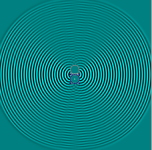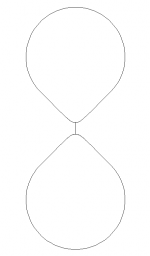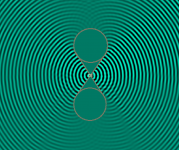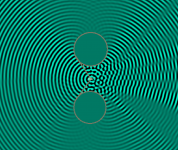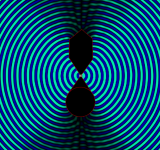I will try my best to avoid it...When eyes and brain become part of the "evaluation" the ears tend to take second place.
(PS. the link doesn't work.)
The link was an error... could not get rid of it, sorry for the confusion.
I would like to try that. I just don't know where to find a doughnut with a 6.5" inner diameter!FYI, if a speaker were placed in the hole of a donut (mathematically a toroid), it would not have any edge diffraction. I told this to Linkwitz many years ago, but he was not interested. Always wanted to try it, but hey, there are lots of things one could "try"!
Thanks Allan, I'd forgotten about this - how to make a BIG toroid, eh?
I have some pieces of scrap 3" thick styrene from building sites that I 'hot-knife' cut for diffusors - that could work, yes? I doubt that the surface would be critical but maybe seal and paint?
I wonder could start with cutting down some 3" styrene foam sheets that I found for some diffusors, use a 18mm ply ring for driver mounting, then seal the outer surface - oops, it's all outer surface, yes! This reminds me of something but I can't remember.
If the internal toroid diameter was to match the 8" driver dia (my Wild Burro 8" FR Betsy drivers, for example) with an 18mm plywood layer for driver mounting, what would be the outer dia for an Fs about 150Hz?
I would imagine rather ugly things but maybe it would work okay. Interesting idea, eh!
I have some pieces of scrap 3" thick styrene from building sites that I 'hot-knife' cut for diffusors - that could work, yes? I doubt that the surface would be critical but maybe seal and paint?
I wonder could start with cutting down some 3" styrene foam sheets that I found for some diffusors, use a 18mm ply ring for driver mounting, then seal the outer surface - oops, it's all outer surface, yes! This reminds me of something but I can't remember.
If the internal toroid diameter was to match the 8" driver dia (my Wild Burro 8" FR Betsy drivers, for example) with an 18mm plywood layer for driver mounting, what would be the outer dia for an Fs about 150Hz?
I would imagine rather ugly things but maybe it would work okay. Interesting idea, eh!
Maybe a vehicle inner tube could be a good start , laying on layers of fibreglass to form a solid donut.
(Or the inflatable swimming rings they sell for children)
Rob.
(Or the inflatable swimming rings they sell for children)
Rob.
Yes, the toroid is interesting. Having a raw driver with no baffle gives a high level of cancellation.
But look at this almost ideal looking high frequency behaviour, none of the other simmed shapes works like that up high.. (idealistic raw driver (second image) for comparison.
OK, this is too simplistic a model to make generalisations, and poor choice of frequency, but I think it says something about the potential of the toroid.
Perhaps it should start out as OS?
But look at this almost ideal looking high frequency behaviour, none of the other simmed shapes works like that up high.. (idealistic raw driver (second image) for comparison.
OK, this is too simplistic a model to make generalisations, and poor choice of frequency, but I think it says something about the potential of the toroid.
Perhaps it should start out as OS?
Attachments
Last edited:
Where did all the worry about cabinet diffraction get started?
Granted, speakers today are all designed to eliminate cabinet issues due to that "effect".
Odd, that some of the best, most popular and sonically pleasing speakers were not designed with that worry in mind.
AR's, KLH's, Advents, etc....
Granted, speakers today are all designed to eliminate cabinet issues due to that "effect".
Odd, that some of the best, most popular and sonically pleasing speakers were not designed with that worry in mind.
AR's, KLH's, Advents, etc....
Now there's an example of lateral thinking, eh! Good one. Quad bike tyres might be around the right size?
I wonder what the outer dia would be?
And I just got rid of the old potter's wheel that could have been useful with this, darnit!
I wonder what the outer dia would be?
And I just got rid of the old potter's wheel that could have been useful with this, darnit!
Let's have a brief look at numbers to see if it's feasible - rough guess, more like it!
If looking towards a baffle size about 500mm dia for an Fs around 150Hz, yes? no? Forgetting offsets, etc for now
If the circumference of out toroid is to be the same 500mm, this would have a 160mm dia, so this would make the outer dia about 200 (centre) plus 2 x 160 = outer dia about 500mm.
Too easy, so what am I missing?
If looking towards a baffle size about 500mm dia for an Fs around 150Hz, yes? no? Forgetting offsets, etc for now
If the circumference of out toroid is to be the same 500mm, this would have a 160mm dia, so this would make the outer dia about 200 (centre) plus 2 x 160 = outer dia about 500mm.
Too easy, so what am I missing?
OOPs, that should be the circumference of the torroid would behalf that 500mm so 250mm = 80mm radius, = 160mm dia.
I'd better not waste time with tatts ticket tonight!
I'd better not waste time with tatts ticket tonight!
This is using a dipole radiator. I bet that a monopole would give pretty decent results, actually the idea is is used in many horns that are deeper.
Another means to reduce edge diffractions is a ball - several speakers available.
J M LeCleach Jean Michel on LeCleac'h horns
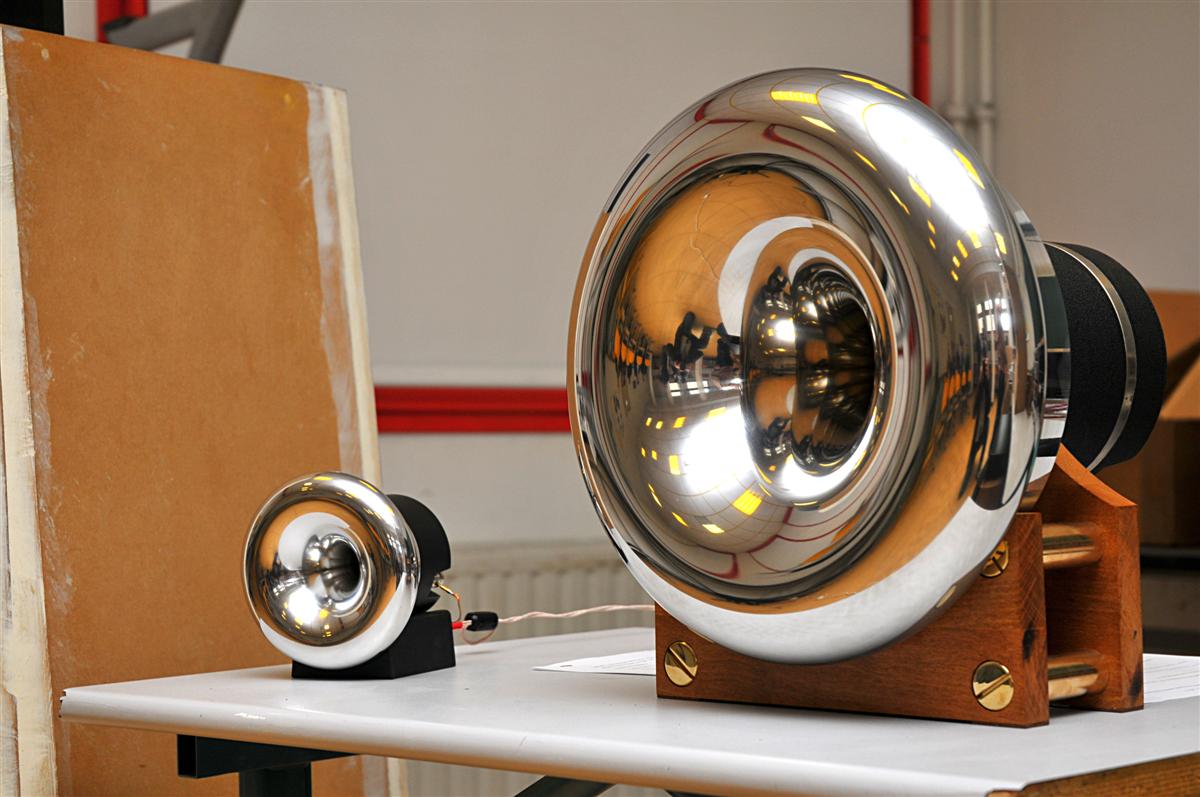
Gradient 1.4 Gradient 1.4 loudspeaker, Jorma Salmi | Inner Magazines
An externally hosted image should be here but it was not working when we last tested it.
- and my clone projet with measurements https://www.diyaudio.com/forums/multi-way/322839-seas-mr18-3-a.html#post5591356
Perhaps it should start out as OS?
Attachments
Umm Alan, pardon me but where does this "OS" profile come from, and why would it be better to start with it?
In the interest to reduce the overall size, can this profile be 'squeezed' to be a 'more squat' vertical profile (= same surface perimeter) without compromising performance?
In the interest to reduce the overall size, can this profile be 'squeezed' to be a 'more squat' vertical profile (= same surface perimeter) without compromising performance?
Don't pay any attention to the relative dimensions. This is a concept, and I haven't tried it, though I'd be interested to hear what others have to say.
However I'm noticing that with the right baffling you can get higher frequency extension with dipole like behaviour. What this OS option may offer the higher frequencies is a reduction of diffraction over the purely round version. The effect at low frequencies should be minimal.
Although this whole process IMO calls into question what pattern is really wanted, I note that diffraction is one of the things that got us into this discussion.
However I'm noticing that with the right baffling you can get higher frequency extension with dipole like behaviour. What this OS option may offer the higher frequencies is a reduction of diffraction over the purely round version. The effect at low frequencies should be minimal.
Although this whole process IMO calls into question what pattern is really wanted, I note that diffraction is one of the things that got us into this discussion.
I vaguely remember the Epsilon guys playing around with some shapes like this. It's curious too how many of the French companies have worked around spherical shapes.
Now we're talking about 'donuts'! And large ones at that!
Now we're talking about 'donuts'! And large ones at that!
To my knowledge only Elipson and Cabasse took the spherical ( or almost ) enclosure path.
Latest iteration is Cabasse's 'la sphere': point source 4way with spherical enclosure. Of course dsp driven and with a very high price tag. Haven't heard it but would like to.
From my understanding of Elipson philosophy it was to deal with bsc (as the curve is smooth and easy to implement) rather than baffle edge diffraction ( most multiway models werent fully spherical with truncated kind of windows for mid/tweeters drivers iirc edit: see model 402).
Cabasse approach solve the latest point as they use a threeway coax from 300hz edit: wrong it is 165hz not 300hz( not really different of the one used by Genelec 83X1 in my pov/ except for waveguide which is a big difference! But technology seems the same to me) which integrate in the sphere and the sub is located inside the enclosure. It's output radiate from openings along a ring on the enclosure.
Clever approach ( and not really different from... Genelec own implementation ).
Latest iteration is Cabasse's 'la sphere': point source 4way with spherical enclosure. Of course dsp driven and with a very high price tag. Haven't heard it but would like to.
From my understanding of Elipson philosophy it was to deal with bsc (as the curve is smooth and easy to implement) rather than baffle edge diffraction ( most multiway models werent fully spherical with truncated kind of windows for mid/tweeters drivers iirc edit: see model 402).
Cabasse approach solve the latest point as they use a threeway coax from 300hz edit: wrong it is 165hz not 300hz( not really different of the one used by Genelec 83X1 in my pov/ except for waveguide which is a big difference! But technology seems the same to me) which integrate in the sphere and the sub is located inside the enclosure. It's output radiate from openings along a ring on the enclosure.
Clever approach ( and not really different from... Genelec own implementation ).
Last edited:
😎
Attachments
Last edited:
Another means to reduce edge diffractions is a ball - several speakers available.
yet another is toe it out and/or tilt it back
- Home
- Loudspeakers
- Multi-Way
- This is either very wrong or I have still not understood diffraction from baffle edge
